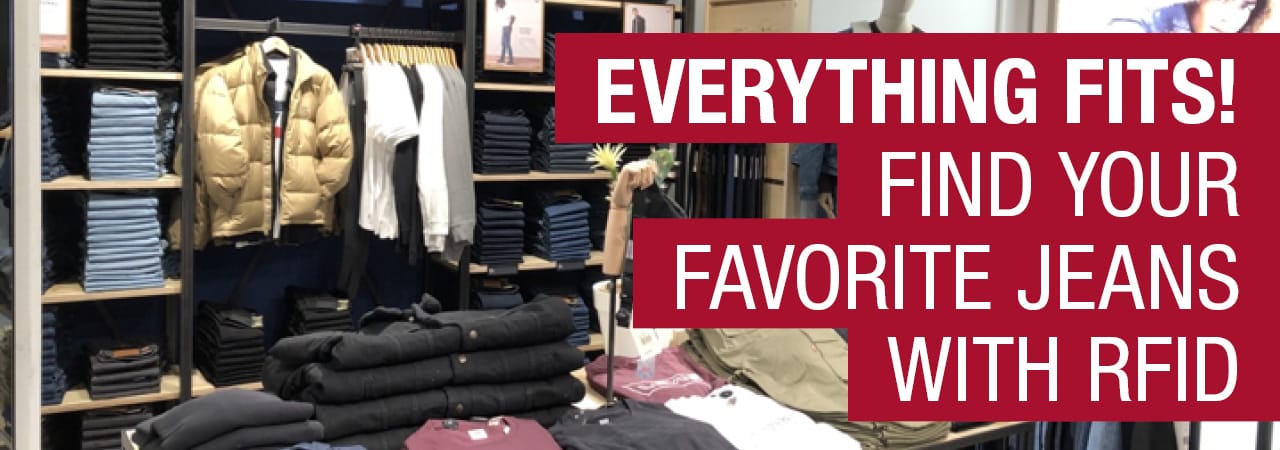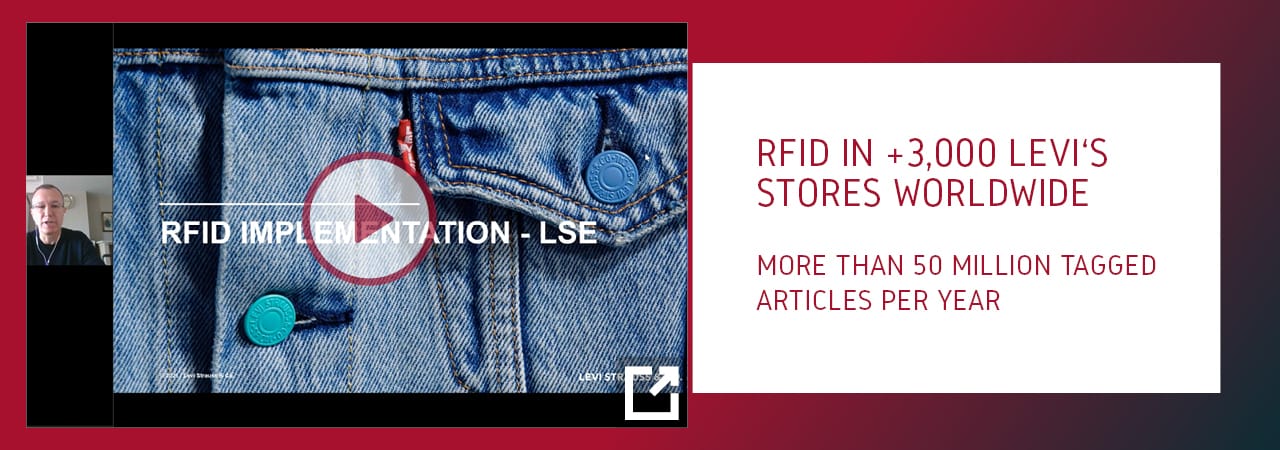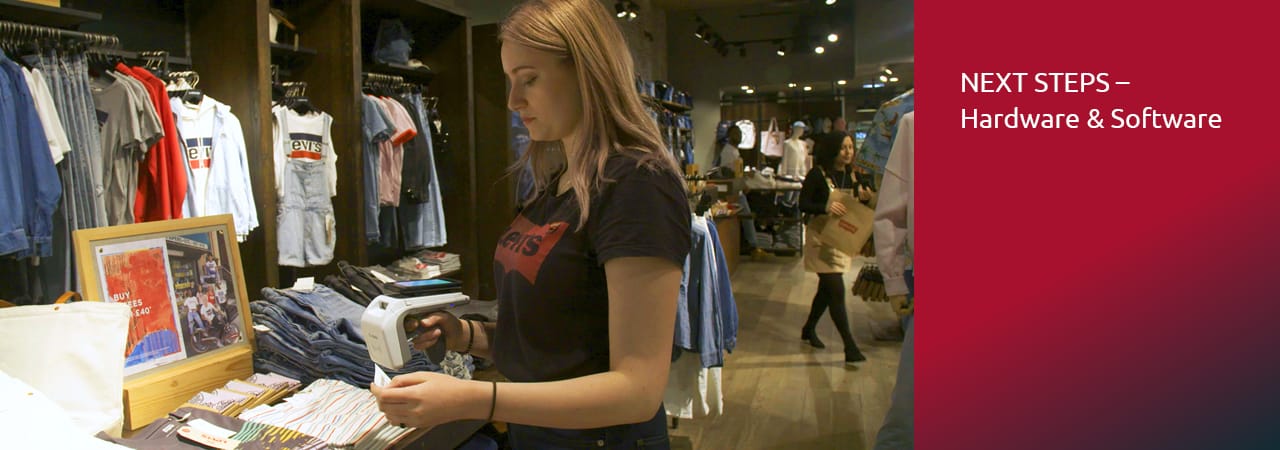RFID in +3,000 Levi's Stores Worldwide
More than 50 Million Tagged Articles per Year
A lot has happened since Levi Strauss tailored the forefather of all jeans available today in 1870 with a pair of sturdy work pants. Today, Levi's sells 120 jeans designs for men and 80 for women in more than 3,000 company-owned/franchise stores and more than 50,000 external retail locations on- and offline in 110 countries. On top of that, there are shirts, T-shirts, shoes, and much more.
But how does Levi's ensure that customers visiting a store always find the one, exact match from the wide variety of products? Levi's answers this question with RFID.
Stefan Otte, Levi Strauss & Co., in an interview with RFID & Wireless IoT Global.
The Levi's RFID Journey in Europe
After technology testing and evaluation early in the 2000s, Levi's implemented the first UHF RFID pilot in Europe at a store in London in August 2017. About six months later, Levi's began the rollout in its own stores operated directly by LS&Co. This was followed by rollouts in franchise stores in mid-2018.
The RFID integration follows the exact same plan as all innovation-driven projects: First, a new technology or IT application is piloted in one or a few stores, then the rollout takes place in the company's own stores. This is followed by expansion to partner-operated stores. "The digital networking of stores is essential in order to be able to offer customers the same shopping experience in all stores. And RFID is one of the fundamental 'ingredients' in this," emphasizes Stefan Otte.
Digital Networking Makes the Difference
The overall objective of Levi's is to increase customer satisfaction during and after the store visit. From Stefan Otte's point of view, this goal can only be achieved if the stores communicate with each other concerning existing inventory. If there is no accurate data on inventory, many options related to the customer experience simply cannot be realized.
"Before RFID integration, all stores, even if they were sometimes only a few streets away from each other in large cities, operated more or less autonomously. With the real-time inventory data that has been collected regularly since the RFID rollout, it is possible for stores to engage in virtual trade with each other. This means that customers always get to their desired product in the shortest possible time."
RFID at Levi's at a Glance
1. Source Tagging
The earlier in the flow of goods a product can be tagged with an RFID tag, the less expensive tagging becomes and the more benefits can be achieved through the use of RFID. While not all options are exhausted along the supply chain (yet), tagging in the DC – or even only in the store – would be more costly and time-consuming.
2. 15 Minutes per Day Instead of 2x a Year
For all applications that aim to achieve the highest possible customer satisfaction, daily inventory accuracy of well over 95 percent is essential. Prior to RFID integration, stores conducted inventories every six months. Today, inventory is taken daily – and takes just 15 minutes on average.
3. Omnichannel
Customers should be able to find the desired product immediately and in the right size on the store floor. If these three aspects cannot be implemented straight away, then store personnel should be well equipped and technologically supported to the extent that they can fulfill customer needs immediately and comprehensively with a service package. Data transparency is a crucial factor.
4. Smart Shielding
The fastest stocktaking is useless if store areas are not clearly separated from each other. If goods are also recorded in the front store that are located in the warehouse, this inventory data becomes unusable. Screening off areas with structural measures is time-consuming and cost-intensive. With a virtual solution – smart shielding – measures can be implemented cost-effectively and efficiently.
5. Success in Numbers
On average, stores that have already been fully RFID-enabled achieve sales increases of around five percent. In all KPIs, such as the Sales Floor In-Stock Indicator (SFI), the stores are well above 90 percent. It makes no difference whether the figures for Levi's own stores or those operated by partners are analyzed.
Next Steps: Hardware & Software
Smart Shielding is the Rollout Turbo
At the beginning of the rollout, the only way to shield store areas was to paint the walls with metallic paint or special wall coverings. Smart shielding based on virtual geofencing and algorithms eliminates the need for structural measures.
Sleek Hardware Setup and RFID Tags for All
The hardware setup will be exactly the same once the rollout is complete in all 3,000+ stores worldwide. "We do not differentiate between Levi's own stores and the approximately 1,800 stores operated by partners," reports Stefan Otte. Zebra handhelds are used in all stores for inventories and merchandise localization. The employees use Ipods as an interface to the data, on which various apps are available for the services. Customer consultations can also be optimized via tablets. All Levi's products are tagged directly in production.
The company does not distinguish whether products are distributed through its own channels or sold in independent stores. "First, splitting them into tagged and non-tagged would be too costly. Secondly, we see a fundamental transformation in retail, in which RFID is an enabler that as many market participants as possible should use," explains Stefan Otte.
Function Update: Replenishment App
The Replenishment App replaces the currently established replenishment process. All data, information and orders are clearly displayed in the app on the employees' ipods. The app draws on various data sources: POS data, proactive forecast data with a preview of future sales, and inventory data from the daily use of the RFID handhelds.
"The app's capabilities are currently being tested and evaluated in six European stores. After final adjustments, the app will be integrated in all Levi's owned stores between April and May 2021. For employees, the manual effort for replenishment process realizations will be significantly reduced. Out-of-stock situations will be avoided and customer satisfaction will be sustainably increased through an increased range of advice and variety of goods on the floor," says Stefan Otte, anticipating this upgrade step.
Source: RFID & Wireless IoT Global: Issue 01-2021
Lecture by Stefan Otte at the Retail & Logistics Think WIOT Day 2021
The lectures from the Think WIOT Day "Knowledge for Retailers" on February 17th can be found here.






